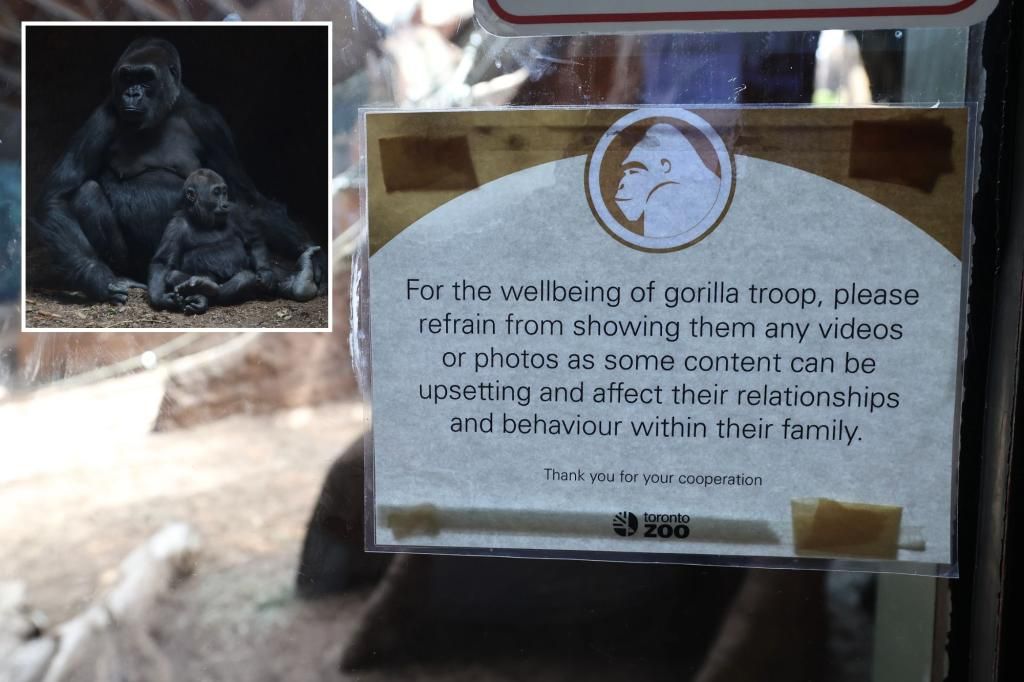Toronto Zoo tells visitors to quit showing phone videos to gorillas
The Toronto Zoo is urging visitors to stop showing gorillas cell phone videos as some of the unmoderated content could be “upsetting” — and even addictive — to the primates.
“We just want the gorillas to be able to be gorillas,” behavioral husbandry supervisor Hollie Ross told CP24 last Thursday.
“And when our guests come to the zoo, we want them to be able to see gorillas in a very natural state, and what they would be doing naturally – to sort of connect with them on that level.”
Newly posted signs requested visitors refrain from showing the animals any videos or photos “as some content can be upsetting and affect their relationship and behavior within their family,” according to a photo posted by the news outlet.
One of the gorillas at the Toronto Zoo, named Nassir, is particularly susceptible to vids.
Signs have been put up to stop people from showing the animals their mobile devices. Toronto Star via Getty Images
The animals are starting to become distracted or addicted to mobile devices as visitors hold them up against the glass for them to see. Toronto Star via Getty Images
“Nassir is truly the epitome of a teenager, fascinated by videos and screen time would dominate his life if he had his way,” the zoo said in their description of him.
“I think, mostly, he was seeing videos of other animals,” Ross told CT24. “But, I think what is really important is that he’s able to just hang out with his brother and be a gorilla.”
The zoo hasn’t noticed any significant changes in the gorillas’ behavior from the video viewing so far.
While guests aren’t encouraged to show them the latest viral TikTok or Instagram post, the zoo does play videos for the gorillas.
But they are careful what they show them.
“We just want to make sure that we know the content,” Ross reportedly said. “Very much like managing an account for a child or something, you want to make sure that your parental controls are on, and that you’re in control of what the content is that they’re seeing.”
Source: New York Post


